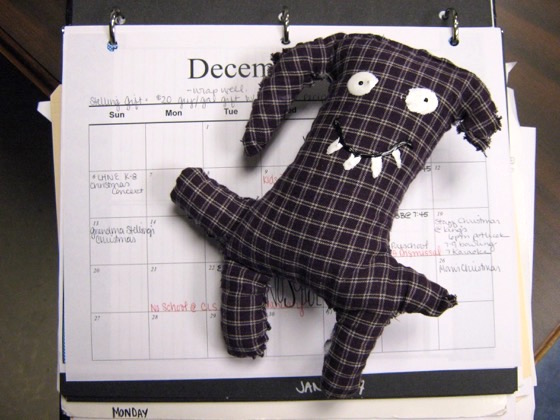Have you ever been stuck in the middle of a never-ending project and not been sure what to do? It’s a great project, and the kids are loving it, but it is TAKING FOREVER.

I had to work through this situation earlier this year when my 5th graders tackled sewing ugly dolls. According to my lesson plans, the whole project should have been wrapped up in 4 days: one for planning, one for sewing, one for stuffing, and one for adding details. I even budgeted in an extra day for slow finishers and uploading to Artsonia. As we approached day 7 with many of my students still sewing, I thought I was going to lose my mind. Why was this project taking this long? What about all the other stuff we had to do? I see my students about 36 times a year, and we had spent almost 20 percent of the year on this one project. So I ask, can a project take too long?
Here are a few questions to ask yourself if you question the length of a project.
1. What are the students learning?
When you find a project taking longer than expected, remind yourself of everything that your students are learning. If you are spending ten class periods just on using grids to draw faces, then there might be an issue. However, if your students are spending weeks on the project because they are creating grids, drawing faces, learning how to paint, selecting a color scheme and finishing their image with a frame, then they really are learning lots of different skills.
Yes, I did have stuffing, fabric, thread, and needles strewn around my room for weeks on end, but my students were designing and creating three-dimensional creatures from their imaginations. They were learning how to sew, creating 3D forms, and then using them for observational drawing. They were using shading and focusing on making their drawings look like their ugly dolls. They were writing stories about their ugly dolls. They developed so many different skills over the course of the project.

2. How are your students reacting to the project?
This is an important thing to consider when looking at a long project. If your students love the project and are invested in what you are doing, they won’t care how long it takes to complete. When we were doing our ugly doll project, the students were working hard every day. Those students who finished early were happy to help other students. It was awesome to see the whole class working together. It was a project that had students talking throughout the building.
3. Is there any way you could streamline or change the project?
When a project starts to take a lot longer than planned, you may need to change your plan. In our ugly doll project, we reached the point when I had to allow students to finish sewing at home or after school. Finishing at home would rarely be my first choice, but there were some students who just needed the extra time. There are times when we need to adjust our plans mid-lesson based on what our students need.

4. What could you do differently next time?
When you finish a project that took longer than expected, it is always a good idea to look back and see what you could have done along the way to save time. I know that I will be doing another sewing lesson in my classroom, but I also know that next time I will be teaching it with a flipped lesson. Many students spent a lot of time standing in line to ask me questions that could have been answered via a quick video review. I also realized that having students practice sewing on plastic cards would have helped them understand basic sewing skills prior to starting on their final projects.
There is no perfect equation for figuring out how long a project should take, and I think it’s important to introduce our students to both quick and more detailed projects. In fact, I sometimes think that the longer, more challenging lessons are the ones that have the most impact on our students. Rather than focusing on the length of the lesson, it is important that we focus on the quality of the lesson.
How long do you give your students to work on a project?
What is the longest lesson you have ever taught?
Magazine articles and podcasts are opinions of professional education contributors and do not necessarily represent the position of the Art of Education University (AOEU) or its academic offerings. Contributors use terms in the way they are most often talked about in the scope of their educational experiences.




